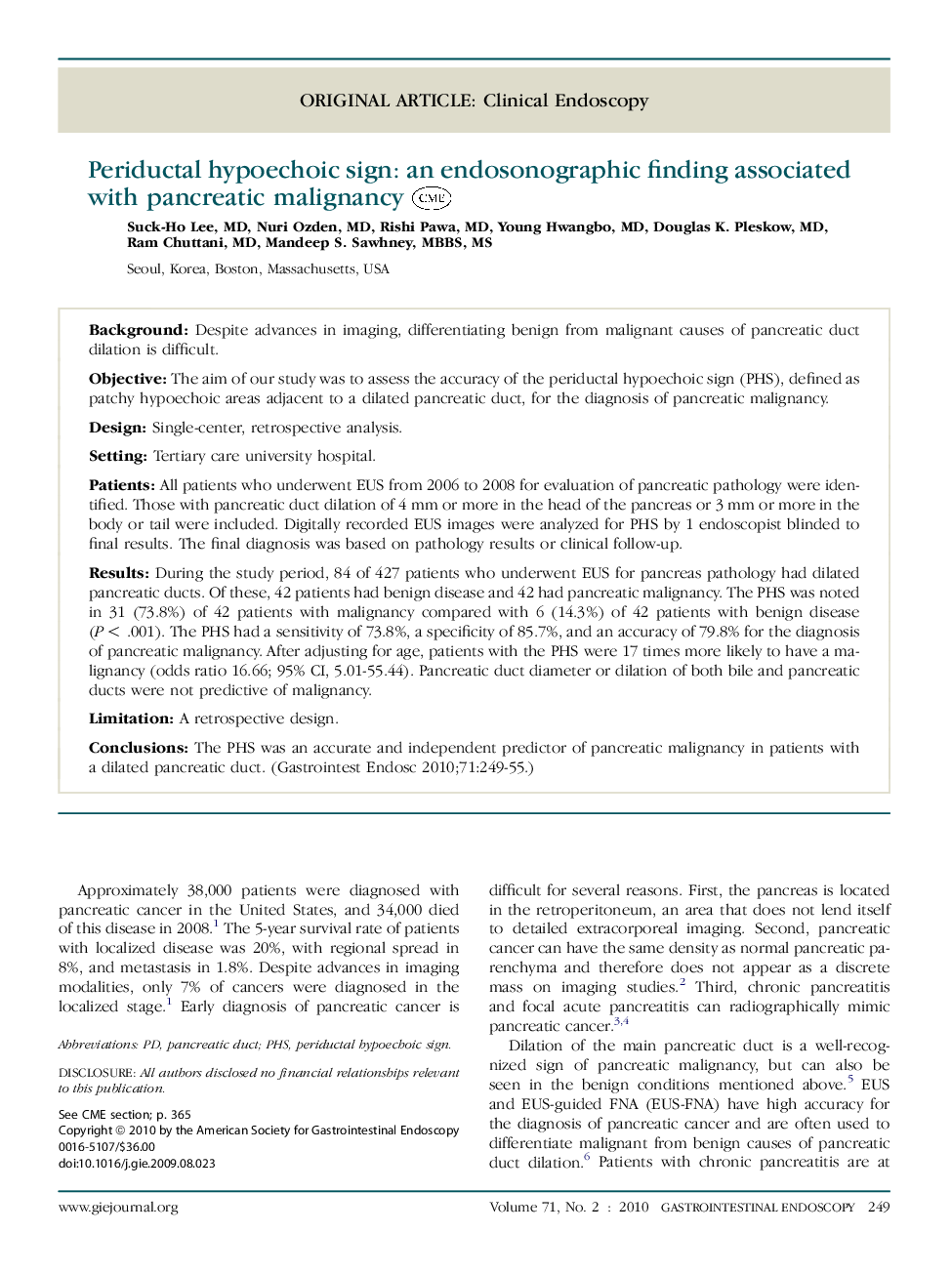| Article ID | Journal | Published Year | Pages | File Type |
|---|---|---|---|---|
| 3305953 | Gastrointestinal Endoscopy | 2010 | 7 Pages |
BackgroundDespite advances in imaging, differentiating benign from malignant causes of pancreatic duct dilation is difficult.ObjectiveThe aim of our study was to assess the accuracy of the periductal hypoechoic sign (PHS), defined as patchy hypoechoic areas adjacent to a dilated pancreatic duct, for the diagnosis of pancreatic malignancy.DesignSingle-center, retrospective analysis.SettingTertiary care university hospital.PatientsAll patients who underwent EUS from 2006 to 2008 for evaluation of pancreatic pathology were identified. Those with pancreatic duct dilation of 4 mm or more in the head of the pancreas or 3 mm or more in the body or tail were included. Digitally recorded EUS images were analyzed for PHS by 1 endoscopist blinded to final results. The final diagnosis was based on pathology results or clinical follow-up.ResultsDuring the study period, 84 of 427 patients who underwent EUS for pancreas pathology had dilated pancreatic ducts. Of these, 42 patients had benign disease and 42 had pancreatic malignancy. The PHS was noted in 31 (73.8%) of 42 patients with malignancy compared with 6 (14.3%) of 42 patients with benign disease (P < .001). The PHS had a sensitivity of 73.8%, a specificity of 85.7%, and an accuracy of 79.8% for the diagnosis of pancreatic malignancy. After adjusting for age, patients with the PHS were 17 times more likely to have a malignancy (odds ratio 16.66; 95% CI, 5.01-55.44). Pancreatic duct diameter or dilation of both bile and pancreatic ducts were not predictive of malignancy.LimitationA retrospective design.ConclusionsThe PHS was an accurate and independent predictor of pancreatic malignancy in patients with a dilated pancreatic duct.
